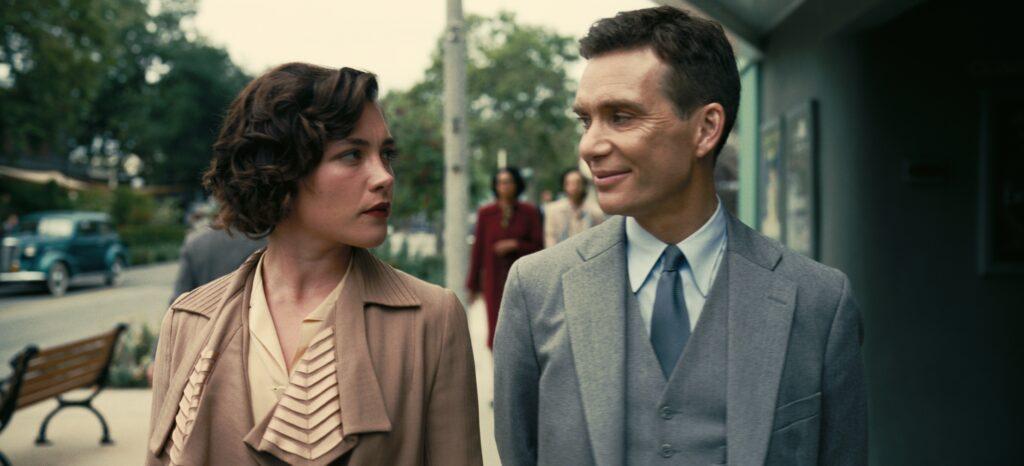★★★★★
The list of all-time highest-grossing R-rated films reads as one might expect: superhero flick, superhero flick, superhero flick, big franchise sequel. Then, sitting at number four is a three-hour drama composed mainly of dialogue, in which essentially the sole “action” scene uses practical effects in lieu of CGI. This movie — “Oppenheimer,” the latest offering from Christopher Nolan — has exceeded its already high expectations and acts as a true testament to Nolan’s place as one of the greatest directors of the 21st century.
Regarding the technical aspects of the film, anyone who watched “Oppenheimer” in theaters can recognize the breathtaking high quality of the crew. The lengthy movie almost exclusively made up of characters discussing quantum physics becomes as exhilarating as any action film. The sound design (overseen by veteran industry professional Richard King) utterly engrosses the viewer, using both total silence and deafening volume to enhance the overall atmosphere. The cinematography, courtesy of frequent Nolan collaborator Hoyte van Hoytema, is unsurprisingly gorgeous, especially the practical bomb detonation sequence.
Also of note are more subtle effects, such as adding flowing particles of light to several scenes, enhancing the motif of the physical presence of the wonders of quantum theory spoken about throughout the film. Kinetic editing and the near-constant presence of composer Ludwig Göransson’s magical score gives “Oppenheimer” the impression of a cinematic freight train, rumbling inescapably towards the climactic Trinity atomic bomb test. The viewer feels the cosmic importance of the events depicted.
Nolan’s exposition-heavy writing is impressive and completely warranted in this film, as he makes the complicated development of the bomb comprehensible to a wide audience. And other than spending a bit too much time with Robert Downey Jr.’s character Strauss after the Trinity test, the film’s script is impressively tight.
I believe that out of all the directors working today, Nolan is the best equipped to direct a movie about J. Robert Oppenheimer. Nolan, though more famous for his larger and complex concepts, created his most character driven film yet in “Oppenheimer.” The darker psychosexual moments explored during Oppenheimer and Jean Tatlock’s affair were a new atmospheric addition for Nolan and an aspect that I enjoyed due to their contribution to the character’s guilt and darker impulses.
Perhaps a different director would have taken a more philosophical and psychological approach, focusing more on the eponymous character’s inner turmoil or better fleshing out his thoughts before and after the bomb’s creation. Yet Nolan included enough of this character work in combination with an element that the few better directors working today could have done nearly as well: spectacle.
Nolan’s films are big; they have always been big. Whether within a complicated multi-layered dreamscape (“Inception”) or progressing forwards and backwards simultaneously (“Memento”), he has well-earned his reputation for large-scale projects. The film’s aforementioned astronomical significance—given the enormous impact that the creation of nuclear weaponry has had on the entire world—is a necessary part of rendering the life and work of such an influential man in a major motion picture. I do not believe there is another modern director who could fuse the scale with enough interesting character investigation to effectively undertake such a project.
I was worried about this film prior to its release. As I mentioned, while I very much enjoy Nolan’s work, he is not especially known for his character work. And tackling the life of one of the most infamous figures in modern history is quite an ambitious feat. But the film performed well enough in this regard. It stuck to depicting Oppenheimer himself, as well as the development of the bomb and the Trinity test — in other words, the American story — and did not delve into explicit commentary on the bombing of Hiroshima and Nagasaki.
Nolan more than delivered on the overwhelming expectations for his film. He created one of the most intricate, well-made, memorable motion pictures of the last decade, as proficient as it is ambitious. I expect this film to enter the annals of 21st century filmmaking, created by one of its most deservedly popular directors.














